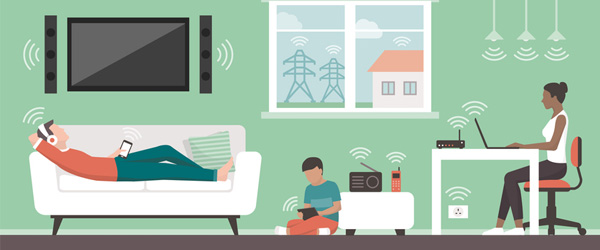
Is ADSL still a good option in 2024?
Thinking about sticking with an ADSL connection? While it was once the cheapest way to get online, changing technology and the upcoming switch-off for copper telephone lines mean it’s no longer the best choice for most UK homes.
Here’s why you should consider switching.
What is ADSL, and how does it work?
Asymmetric Digital Subscriber Line (ADSL) is the most basic type of broadband connection in the UK. It works by sending data and voice along the same landline copper wires used for a home phone service. A filter is installed at the end of the cable to split the signals. Unlike dial-up, you can use your phone and internet at the same time.
Most ADSL broadband services use ADSL2+ technology, with faster speeds for homes closer to the telephone exchange. However, areas without ADSL2+ may experience slower speeds (around 8Mb max).
Who offers the best ADSL broadband deals?
ADSL broadband deals were once available from major providers like BT, TalkTalk, Sky and Vodafone. But, by the end of January 2027, these copper landlines are due to be switched off.
Providers are working to phase ADSL lines out. Because of this, you may find that you can only sign up to ADSL broadband now if your home doesn’t or can’t have fibre optic cables installed.
Don't worry. If you really don’t have the option to switch to a full fibre optic internet connection yet (FTTP), you can still find some competitive deals. These include:
- Price: From £29 per month (18-month contract)
- Average download speeds: 11Mb
- Perks: Free router and call-add on options
- Price: From £29 per month (18-month contract)
- Average download speeds: 7Mb - 16Mb
- Perks: BT call protect and caller display
Is ADSL fast enough for you? ADSL vs Fibre
While ADSL internet speeds are slower than a fibre connection, it’s still fast enough for:
- Basic browsing and emails
- Streaming TV (i.e Netflix or BBC iPlayer) in standard quality on one device
- Light work-from-home use
But you might struggle with:
- Downloading large files
- Online gaming
- Video calls
There are other downsides too. This includes the fact that:
- It’s much slower than fibre broadband services, especially upload speeds
- It requires a telephone line and line rental
- Speeds get slower the further you are from the street cabinet
If you download large files or have multiple users, fibre broadband (30Mb+) is a better choice.

Top tip:
Many fibre deals now come with the same monthly cost (or less) than ADSL, making an upgrade a no-brainer.
Need help understanding the speed you need for your home broadband? Read our ‘ultimate guide to broadband speeds’ for more help.
Frequently asked questions
-
Is ADSL faster than fibre broadband?
No, ADSL offers a slower broadband speed. Standard broadband (FTTC) delivers superfast download speeds of 30Mb+, whilst high-speed full fibre and Virgin Media cable broadband services can reach 1Gb+.
-
What’s the average price for ADSL broadband?
ADSL deals are priced around £30 per month, but you might find that upgrading to a basic fibre package can work out cheaper.
Thinking about upgrading? With fibre optic broadband now available to 98% of UK homes, switching from ADSL could give you faster speeds for the same price.
Use our postcode checker to find faster home broadband deals today!
Expert Summary
ADSL broadband remains a budget-friendly option, but since copper phone lines on the Openreach network that many providers in the UK use will be discontinued by 2027, switching to fibre broadband is recommended.
If you’re still on an ADSL deal, it’s likely you will soon be approached by your provider to move to a basic fibre broadband package. Before this happens, we recommend looking around at your options. If you're out of contract, you don't have to stick with your current provider.
The good news is that fibre broadband should be no pricier than an ADSL deal. In fact, you’re more likely to be able to make use of special offers such as gift cards or free gifts for new customers. These cheap broadband deals are also a good alternative.